Note: I will be traveling with limited internet access next week, so there will be no Weekly Grounding on Friday, November 8th. Keep an eye out for Weekly Grounding #71 on Friday, November 15th. I hope the following Grounding provides you with plenty of food for thought as the election results come in next week.
Weekly Groundings are designed to ground your thinking in the midst of media overload and contribute to Handful of Earth’s broader framework. Please subscribe if you’d like to receive these posts directly in your inbox on Fridays.
Each Weekly Grounding generally touches on a wide range of topics related to Handful of Earth’s broad focus on culture, politics, and technology. This week, however, with the United States presidential election around the corner, I decided to publish a Special Edition Weekly Grounding on the election. This is the third Special Edition Weekly Grounding—the first was on the topic of artificial intelligence (#43) and the second was on the economy (#53).
Consistent readers of Handful of Earth will recognize that I take a measured approach to American politics. This is not to be confused with a “centrist” or “moderate” approach. By “measured,” I simply mean an approach that rejects the shibboleths of conventional partisan divides. While I may sometimes appear on the surface to align with one “side” or the other, my deeper reasons for doing so never stem from party allegiance or culture war dogma.
Part and parcel of this measured disposition is the understanding that electoral politics is merely the effect of much deeper phenomena. I am more interested in these phenomena than I am in who wins the 2024 presidential election.
To this end, what follows is a compilation of items sourced from previous Weekly Groundings that, in one way or another, help make sense of the transformations and realignments in American politics in recent years. I believe that these transformations and realignments are more significant than any one electoral outcome. These items are arranged in the chronological order that they appeared in the Weekly Groundings.
If this post helps ground you on the eve of the election, please consider sharing it with your friends and family.
“Where Have All the Democrats Gone?”
This review in The Financial Times of a forthcoming book by
and provides some important insights about the electoral failures of the contemporary Democratic Party. The book is especially significant because “Back in 2002, the pair [Judis and Teixeira] published The Emerging Democratic Majority, a work that basically created the ‘demographics is destiny’ concept. A lot of people took the idea as a fait accompli — but clearly hadn’t read the book, which actually held that a growing Democratic coalition of younger people, urban professionals, minorities and single working women could only be a winning base if Democrats could also keep working class whites under the same banner. That didn’t work out as hoped.”“Conservatives Go to Red States and Liberals Go to Blue as the Country Grows More Polarized”
The Associated Press reports that “Americans are segregating by their politics at a rapid clip, helping fuel the greatest divide between the states in modern history.” Online polarization gets a lot of media attention, but the increasing geographical political divides in America are just as (if not more) significant: “The split has sent states careening to the political left or right, adopting diametrically opposed laws on some of the hottest issues of the day. In Idaho, abortion is illegal once a heartbeat can be detected in a fetus — as early as five or six weeks — and a new law passed this year makes it a crime to help a minor travel out of state to obtain one. In Colorado, state law prevents any restrictions on abortion. In Idaho, a new law prevents minors from accessing gender-affirming care, while Colorado allows youths to come from other states to access the procedures.”
“Break Up America’s Elite”
Michael Lind investigates the post-1970s homogenization of American elites at Compact Magazine. In the last half century, Lind observes that the American elite has come to look more and more like the elite in countries such as the United Kingdom, France, and Japan. Its structure “resembles a candelabrum: Those who manage to squeeze through the stem of a few prestigious colleges and universities in their youth can then branch out to fill leadership positions in almost every vocation, including the arts, outside of the military and the clergy.” I wrote an extended review of Lind’s 2020 book, The New Class War: Saving Democracy from the Managerial Elite. It’s one of the better analyses of emergent political divisions in the United States that I have read in recent years.
“America’s Identity Crisis”
At The Financial Times, Rana Faroohar reflects on America’s “serious problems at home, such as dealing with falling living standards, a terrible healthcare system, and racial discrimination. Indeed, it may be those very issues that have led Americans to have a more negative view of themselves in the world than many allies do. Gallup data shows that only 37 per cent of Americans are satisfied with their country’s position in the world, versus a high of 71 per cent in 2002. This decline has led to an inwardness on international issues such as trade and global security, according to Pew.” She then discusses the how this has played out along party lines: “Less than half of [Republicans] now see trade as an opportunity, compared to 72 per cent of Democrats, according to Gallup. Likewise, three times more Republicans than Democrats believe that the US is doing too much for Ukraine. Both sides increasingly believe that China is an enemy, and co-operation will be impossible.”
“Most Americans Favor Restrictions on False Information, Violent Content Online”
This Pew Research survey chronicles the increasing acceptance of censorship among Americans since 2018. The survey dealt with both the questions of “false information” and “extremely violent content” online, questions which, I believe, should have been treated separately. Nevertheless, the results for the former category are significant and worthy of serious concern. Since 2018, Americans have becoming significantly more supportive of the government and tech companies regulating the circulation of information. The following figure documents this sizable shift in attitude over the course of just five years:
“Vivek Ramaswamy and the Rise of Indian America”
provides a fascinating account of Indian Americans in United States politics at Unherd. Of presidential candidate Vivek Ramaswamy, he writes: “With an undergraduate degree in molecular biology from Harvard and a law degree from Yale, he perfectly captures the balance between technical and verbal fluency that is the marker of many South Asian elites. His brash, assertive and pugilistic debating style would not be out of place at an Indian American social gathering. And, crucially, he has accrued a vast fortune, a symbol of an opportunism that is entirely all-American, where getting rich is seen as glorious and a sign that one has ‘made it.’” Khan continues: “America is truly a land of opportunity, a nation where immigrants can ascend to positions of power and accrue great wealth through dint of hard work and application of human capital. Yes, racism may exist, but it is no bar to advancement.” The key word here, I think, is “immigrants,” since this proverbial “land of opportunity” is historically illusive for Black Americans and, increasingly, downwardly mobile whites. For more on this topic, see Yvette Carnell’s video, “Vivek Ramaswamy's Caste Bias & Revisionist History,” which was featured back in Weekly Grounding #1.“Residents Protest Plan to House 300 Migrants at Hyde Park Area Motel”
Handful of Earth strives to address key political, cultural, and technological issues and debates with an acknowledgement of their immense complexity. While it may be tempting to simply think about “nonwhite” or “Black and Hispanic” voting blocs in American politics in light of the media framing of poll results, that is only part of the picture. CBS News Chicago reports on many Black residents’ opposition to a city plan to house hundreds of migrants in a Hyde Park motel for an indefinite period: “‘You've got 73 percent of the people homeless in this city are Black people,’ a woman said. ‘What have you done for them?’” For more on this topic, see Weekly Grounding #8.
“Americans’ Dismal Views of the Nation’s Politics”
This Pew Research Center report chronicles the systemic crisis in contemporary American politics: “A comprehensive new Pew Research Center study of the state of the nation’s politics finds no single focal point for the public’s dissatisfaction. There is widespread criticism of the three branches of government, both political parties, as well as political leaders and candidates for office.” The report continues: “Americans’ unhappiness with politics comes at a time of historically high levels of voter turnout in national elections. The elections of 2018, 2020 and 2022 were three of the highest-turnout U.S. elections of their respective types in decades. But voting in elections is very different from being satisfied with the state of politics – and the public is deeply dissatisfied.” The following chart demonstrates this point clearly:
“The Lives Politics Doesn’t Touch”
In this strikingly candid opinion piece for The Financial Times, Janan Ganesh addresses an important yet often overlooked topic: the nearly complete sheltering of certain demographic groups from the consequences of politics. The subtitle says it all:
Ganesh elaborates: “Friends, I seem to have exited History. Outside of the obvious and eternal themes of taxation and law and order, the issues of the day impinge little on me. I find it stimulating to observe politics, as a zoologist does a wombat colony, and I certainly have preferences. But something about the atomisation of the modern world has spared me personal exposure to political decisions.”
“Migrant Crisis Tests New Yorkers Who Thought They Supported Immigration”
The New York Times reports on tensions surrounding the migrant crisis in New YOrk City: “New York has long proclaimed its openness to new arrivals, enshrined in the welcoming words on the Statue of Liberty. But the influx of more than 110,000 migrants in a little more than a year, and the strain on the city’s already stretched resources, has called that openness into question. What happens when the tired, huddled masses are suddenly not a poetic conceit but a continuous tide of very needy newcomers, living in temporary shelters or school buildings in residential neighborhoods?” The article continues to discuss State Senator John Liu, “whose Senate district includes a large immigrant population.” Liu stated that “many of the complaints about migrants were not coming from areas that have been traditionally anti-immigrant. Instead, he said, protests followed the shelters, so ‘even in parts of the city that tend to be very pro immigrant, many of those residents are up in arms.’”
“Donald Trump Followers Targeted by FBI as 2024 Election Nears”
This extended report in Newsweek documents the rise of rhetoric about “domestic terrorism” from the Biden administration and intelligence community. The report strikes a foreboding tone: “Experts agree that as the 2024 election approaches, there will be greater pressure to prevent law-breaking, one that necessitates infiltration of political circles and other controversial government activity.” Efforts to find these “domestic terrorists” lurking in every nook and cranny of the country are eerily similar to Israeli rhetoric on Palestine. One IDF fighter recently described his view of Gaza to The Financial Times: “Anything you touch could be a bomb, anyone you see could be a terrorist [my emphasis].” As the Newsweek report points out, there is a direct connection between the War on Terror abroad and the new war on “domestic terrorism” under the Biden administration. This is due to America’s “two decades of experience fighting international terror…That skewed the bias toward seeing groups such as the Proud Boys and Oath Keepers, as well as militia movements around the country, as the problem...because that was what the counterterrorism apparatus was used to focusing on, groups such as Al-Qaeda and ISIS.”
“Is There a New Left Stirring Within The New Right?”
analyzes the “segment of recent politics that is sometimes identified with the ‘new right’ but in reality offers a much more heterodox—and interesting—approach to politics and policy, one that’s well worth considering by liberals and left-wingers alike” at . Judis argues that “What distinguishes these thinkers from others is their engagement with what used to be called ‘the labor question:’ namely, how America can fulfill its original promise of political and economic equality in a society where the owners and managers of capital have inordinate power over labor and politics.” He reviews the recent writings of Michael Lind, Sohrab Ahmari, and Oren Cass to argue that “What liberals and the left need to recognize is that amidst the blather of the new right, Lind, Ahmari, and Cass's work and the institutions they direct could represent the first stage of an eventual realignment—one that could benefit American workers and citizens the way that Roosevelt's New Deal did.” While I question how feasible a return to anything resembling New Deal economics would be, Judis’ article gives a lot of food for thought.“The Israel-Hamas War Will Reshape Western Politics”
At The New York Times,
analyzes the political realignments that have produced such fierce domestic division in the United States in response to the violence and Israel and Palestine. While I think he underestimates the older alignments at play on the American scene, this is still a useful piece. Douthat’s analysis of the “alienated right” was particularly interesting: “Among my fellow conservative Catholics, for instance, there’s a longstanding anger at George W. Bush for invading Iraq and letting Middle Eastern Christianity be devastated by the ensuing wars and a sense that Israel was that foolhardy project’s accomplice. Among the would-be vitalists and Nietzscheans of the post-Christian right and certain other far-right influencers, there’s plenty of conspiracy theorizing and anti-Semitism. And then the Trump-era Republican coalition writ large includes a lot of nonreligious, disaffected, working-class Americans, for whom pro-Israel sentiments may come to feel, or feel already, like a luxury belief, a province of the elites whom they disdain.” The salience of religious and other highly specific worldviews in shaping responses to the conflict is one of the reasons I wrote an article on the topic of Jewish theology at Handful of Earth: “The World Is Built by Gratuitous Kindness.”“Voters See American Dream Slipping Out of Reach, WSJ/NORC Poll Shows”
A new Wall Street Journal poll finds extremely high levels of pessimism about the American dream, even compared to last year: “Only 36% of voters in a new Wall Street Journal/NORC survey said the American dream still holds true, substantially fewer than the 53% who said so in 2012 and 48% in 2016 in similar surveys of adults by another pollster. When a Wall Street Journal poll last year asked whether people who work hard were likely to get ahead in this country, some 68% said yes—nearly twice the share as in the new poll.” The trend over the past decade is clear:
The article adds that “an NBC News survey released this month found that 19% [of Americans] felt confident that life for their children’s generation would be better than for the current one—a record low in the group’s surveys dating to 1990.”
“Is the American Dream Really Dead?”
Weekly Grounding #29 discussed Americans’ rapidly declining faith in the American dream alongside troubling data on life expectancy and suicide. Rana Faroohar’s review of David Leonhardt’s recent book, Ours Was the Shining Future: The Story of the American Dream, expands on these topics at The Financial Times: “For the last half century, US incomes have stagnated and wealth inequality grown. A typical family in 2019 had a net worth slightly lower than the typical family in 2001. ‘There has not been such a long period of wealth stagnation since the Great Depression,’ Leonhart writes. What’s more, life expectancy is down — a rare and disturbing anomaly for a rich nation — as is social mobility.” Faroohar continues: “In Leonhardt’s analysis, changes to three things — political power, culture and investment — mean that average, working Americans have been left behind. Since the late 1960s, the ‘old labor’ of the New Deal has been hijacked by a new and more entitled ‘Brahmin left,’ increasingly made up of college-educated elites that talk down to workers rather than with them. In a country that fundamentally skews more socially conservative, the Democratic party has also become too radically progressive on social issues such as abortion, immigration and LGBTQ rights. Because of this, they have lost the electoral votes needed to push through badly needed economic policies such as long-term public investment, as well as more progressive taxation, plus healthcare and educational reform, that would temper rising inequality. Add in a ‘greed is good’ culture of self-interest and global market forces pushing only what’s good for the quarter, and you get a country in decline.”
“Class Conflict and the Democratic Party”
Speaking of the “Brahmin left,” a topic addressed previously in Weekly Grounding #14, this analysis by
for argues that the “key schism that lies at the heart of dysfunction within the Democratic Party and the U.S. political system more broadly is between professionals associated with ‘knowledge economy’ industries and those who feel themselves to be the ‘losers’ in the knowledge economy—including growing numbers of working-class and non-white voters.” Al-Gharbi provides a rigorous history of the “increasing dominance of knowledge economy professionals over the Democratic Party” that is well worth reading leading up to the 2024 election. He notes that “professionals tend to be far more supportive of immigration, globalization, automation, and artificial intelligence than most Americans because they make professionals’ lives more convenient and significantly lower the costs of the premium goods and services they are inclined towards. Those in knowledge professions primarily see upsides with respect to these issues because their lifestyles and livelihoods are much less at risk—indeed, they instead capture a disproportionate share of any resultant GDP increases—and their culture and values are largely affirmed rather than threatened by these phenomena. Others may and often do experience these developments quite differently.”“America and a Crumbling Global Order”
Financial Times columnist Gideon Rachman takes stock of the multiple crisis facing the Biden Administration: “The Biden administration is currently trying to deal with wars in the Middle East and Europe, while preparing for a surge in tensions between China and Taiwan…The combination of all these events is creating a palpable sense of tension and foreboding in government offices in Washington. It is not just the sheer number of crises coming at the Biden administration, but the fact that many are heading in the wrong direction — the wars in Ukraine and the Middle East, for example. And the polls look bad for Biden.” Rachman continues: “A chaotic and divisive US election — with Trump as the central figure — will contribute powerfully to that impression of US weakness and decline. China, Russia and Iran will relish asking how America can promise to defend democracies overseas, when its own democracy is in so much trouble at home. Unfortunately, it is a good question.”
“America’s Cultural Supremacy and Geopolitical Weakness”
In this perceptive column at The Financial Times, Janan Ganesh juxtaposes the massive influence of American culture abroad with the country’s present crisis in geopolitical influence: “America has more cultural reach now than it did in its supposed unipolar moment of the 1990s…To adapt what Jefferson said about France, everyone, or at least everyone educated and liberal, seems to have two countries now: their own and America. All the while, the geopolitical clout of the US wanes. Recent months have been a tutorial in Washington’s limited purchase on the Middle East. The once-uncontested superpower has also failed to persuade much of the world to participate in sanctions against Russia. It has little to show for 20 years in Afghanistan. The Bretton Woods institutions are fighting for relevance. The proliferation of armed conflicts, set out in a recent report from the International Institute for Strategic Studies, suggests that Pax Americana is giving way, if not to Pax Sinica then to no kind of Pax at all. As during the cold war, the US struggles to corral the ‘global south,’ which was called the ‘third world’ at the time, and will be called something else soon, when liberal protocol moves on in all its clockwork fickleness.”
“The Elite Misunderstands American Globalisation Grievances”
Oren Cass summarizes some fascinating survey results recently released by American Compass for The Financial Times: “The survey, conducted in partnership with YouGov, asked 1,000 American adults whether ‘you, personally,’ had ‘benefited’ or ‘suffered’ from America’s embrace of globalisation and China. Overall, 41 per cent reported benefiting while 28 per cent reported suffering. The share benefiting was higher across classes and regions. Yet as the frame of reference expanded, the sentiment turned more negative. The margin in favour of ‘benefited’ was only +7 per cent when the question was about ‘your family and friends,’ fell to zero for ‘the community where you live,’ and reached -13 per cent for ‘the nation as a whole.’ Rather than nursing resentment, Americans appear simultaneously to appreciate the personal benefits of globalisation while worrying about its broader effects.”
Cass offers the following analysis of these seemingly counterintuitive results: “First, place matters. While globalisation’s boosters take for granted that its disruptions can be remedied by ‘helping people move to opportunity,’ Americans prefer a focus on ‘helping struggling areas recover’ by 70 per cent to 30 per cent. Second, making things matters. By 83 per cent to 8 per cent, Americans agree that ‘we need a stronger manufacturing sector.’”
“Ron DeSantis and the Failure of Pseudo-Trumpism”
At Unherd, Michael Lind evaluates the ideological and policy divisions on display within the Republican primary. He argues that “DeSantis’s Pseudo-Trumpism and Nikki Haley’s Pre-Trumpism are attempts to build bridges between…raucous MAGA newcomers and the remnants of the older Bush Republican party — at least those who had not already quit the party out of disgust with the populist parvenus who have crashed the country club.”
Lind continues: “[H]owever incoherent Trump may sometimes be, he has tapped into a worldview with certain coherent public policy positions, whether they be on government entitlements, immigration or forever wars. Members of the declining Republican establishment who hope that they can revive their old Bush-era programme of benefits cuts and foreign adventures, while pacifying national populist voters with performative denunciations of wokeness, will be disappointed by DeSantis’s failure. If there’s a conclusion to be drawn from his rise and fall, it’s that Trump voters want the real thing, not a placebo.”
“A New Global Gender Divide is Emerging”
In this fascinating report, Financial Times columnist John Burn-Murdoch explores the stark ideological divides between young men and women. He traces this trend (which is particularly pronounced among younger millennials and Gen Zs) to the #MeToo movement: “Seven years on from the initial #MeToo explosion, the gender divergence in attitudes has become self-sustaining. Survey data show that in many countries the ideological differences now extend beyond this issue. The clear progressive-vs-conservative divide on sexual harassment appears to have caused — or at least is part of — a broader realignment of young men and women into conservative and liberal camps respectively on other issues.”
Though any regular reader of Handful of Earth will recognize the major problems with categories like “liberal” and “conservative” (which in this article are indicated by self identification and voting behavior), the trends are so significant that they merit close consideration:
“RFK Voters Split On Israel War Support, Back Him On Ukraine”
Democratic Party pandering to the professional-managerial class has cost the party dearly and pushed many voters into the Trump camp or toward a third party. Robert F. Kennedy Jr. continues to draw significant polling support from both former Democratic and Republican Party voters. In this fascinating Breaking Points/JLPartners focus group, Kennedy supporters are asked about his views on the wars in Ukraine and Israel. While all agree with his opposition to American bankrolling of the Ukraine War, many disagree with his support of Israel’s war on Gaza for both moral and economic reasons.
When asked about Kennedy’s unconditional support for Israel, one participant articulated the America First (broadly conceived) sentiment that cuts across large swathes of the American electorate: “We had Hurricane Katrina over here where they wiped out millions of peoples’ homes and they didn’t even help them. So how could you go help another country when you can’t even help your own? I just don’t get it, I just don’t. I stand firm to that.”
“A Better Model of Political Categories”
At
, argues that “cramming everything about our politics into Left vs. Right leads to some deep confusion about who is pursuing what ends and why.” He then provides an alternative model of “political personality types.” Lyons identifies four axes along which to think about politics: “Progressive (P) vs. Conservative (C),” “Egalitarian (E) vs. Hierarchical (H),” “Individualist (I) vs. Communalist (M),” and “Materialist-Rationalist (R) vs. Spiritual-Intuitive (S).” These axes can then be arranged in various combinations and permutations to describe specific political personality types.Lyons then gives particular examples of how these axes map onto actually existing political ideologies. For example, he characterizes classical liberalism as “Progressive, Egalitarian, Individualist, Materialist-Rationalist (PEIR)” and Anglo-American conservativism as “Conservative, Hierarchical, Individualist, Spiritual-Intuitive (CHIS).”
“American Politics Is Undergoing a Racial Realignment”
John Burn-Murdoch at The Financial Times observes that “the Democrats are going backwards faster with voters of colour than any other demographic.” Burn-Murdoch’s data suggests that “many of America’s non-white voters have long held much more conservative views than their voting patterns would suggest. The migration we’re seeing today is not so much natural Democrats becoming disillusioned but natural Republicans realising they’ve been voting for the wrong party.” The phenomenon holds across a range of non-white demographics:
“The Rough Years That Turned Gen Z Into America’s Most Disillusioned Voters”
The Wall Street Journal interviews a range of Gen Z voters, who express more pessimism about the direction of the country and politicians than any other living generation before them. The Journal reports: “Young adults in Generation Z—those born in 1997 or after—have emerged from the pandemic feeling more disillusioned than any living generation before them, according to long-running surveys and interviews with dozens of young people around the country. They worry they’ll never make enough money to attain the security previous generations have achieved, citing their delayed launch into adulthood, an impenetrable housing market and loads of student debt.” 18-25 year olds have less confidence in almost all major American institutions than other generations when they were the same age:
“The Great Tension Inside the Trump G.O.P.”
Ross Douthat chronicles the increasing gulf between “populist voters” and “libertarian elites” in the Republican Party for The New York Times. Recent polls report that “larger shares of Republican voters said they believed that the federal government should be doing more, rather than less, to provide ‘support for the poor, disabled, needy’ and ‘medical care for those who need help affording insurance’ and to sustain Social Security and Medicare.” Despite this fact, he notes that House Republicans continue to push forward with decidedly anti-populist economic policy proposals.
Douthat continues: “[O]ne can imagine a future in which the Republican base of 2050 responds to every economic polling question with ‘Workers of the world, unite!’ — and yet House Republicans are still putting out budget blueprints that cut health care and retirement spending to fund upper-bracket tax cuts.” He goes on to offer several different explanations for this increasing mismatch between the Republican base and its policymakers, in addition to some speculations about where the towering figure of Trump fits into the picture.
“Donald Trump Finds a Sympathetic Crowd in New York’s Harlem Neighbourhood”
The Financial Times reports on Donald Trump’s recent campaign visit to Harlem: “It turns out that many in the spiritual home of Black New York — albeit, a neighbourhood increasingly populated by Latinos and Middle Eastern immigrants — were at least sympathetic to Trump, if not outright supporters. Several expressed discontent with the economy and immigration, as well as a fondness for a New York icon who — while born rich — had somehow made himself a symbol of outsider hustle and grit.”
Opposition to illegal immigration (often expressed by recent immigrants) was a common thread in the interviews: “Julie Puello, 30, a self-described Democrat who moved to New York five years ago from the Dominican Republic, also had a visible distaste for Trump’s combative personality. Still, Puello understood his appeal to many in the neighbourhood. Even recent arrivals like herself were unhappy with a surge of immigration and the perceived benefits that newcomers were receiving at their expense.” Another Harlem resident, Maad Ahmed, had “fled the war in Yemen with his wife and two sons…He was dismayed, he said, when Trump issued an executive order banning incoming travellers from six Muslim nations, including his native Yemen, soon after taking office in 2017. But he now appreciated the former president’s campaign against illegal immigration.”
“Postcard from the Hispanic Working Class”
Ruy Teixeira summarizes recent polling data on the ideological and political gap between non-college educated and college-educated Latino voters for
: “These data strongly suggest that not only are working-class Hispanics driving the Hispanic trend toward Trump and the GOP but also that working-class and college-educated Hispanics have very different political outlooks and concerns that are obscured by thinking of them as an undifferentiated mass or, worse, ‘people of color.’ The beginning of wisdom is recognizing these class differences and adapting political appeals to take those differences into account.”Teixeira reports: “In terms of voting intentions, Biden leads by just one point among working-class Hispanics but by 39 points among their college-educated counterparts. Interestingly, this 38-point reverse class gap is actually larger than the class gap in this poll among whites (30 points).” He also notes that working-class Hispanics favor the policy proposal, “‘Build a full wall on the U.S.-Mexico border,’ by 18 points while college Hispanics oppose the idea by 19 points. And working-class Hispanics favor ‘Restrict the ability of migrants who illegally cross the U.S.-Mexico border to seek asylum,’ by a whopping 39 points while college Hispanics are roughly split down the middle.”
“Woke-Speak of Bosses at NPR and Academia Irks the Masses”
Crispin Sartwell declares that “woke is over now” at Sublation Magazine: “[T]his way of talking is a style. It’s a style that has grown incredibly irritating. It’s a style that attributes to itself the supernatural ability to change reality by changing vocabulary. So, by its own standards it must be condemned as a miserable failure, insofar as it does not help people achieve justice, but primarily alienates and divides them. It functioned fairly effectively as long as it was restricted to the academic hothouse, but as it’s emerged, the futile absurdity of its layers of euphemisms has been exposed.”
Sartwell perceptively observes that “There will be vestiges for decades, and many young people, having been thoroughly trained in woke academic style, will be confused and disabled politically for a bit as the echoes fade. They’ll need to adjust and maybe find a new way to be progressives. But the people who are really going to struggle are the college professors and administrators who came of age during this period, the squads of DEI officers and humanities professors who have already written hundreds of memos, or whole tenure books, in the approved vocabulary.”
“Return to Janesville — Life After Manufacturing in America’s Heartland”
At The Financial Times, Amy Goldstein reflects on her 2017 book, Janesville, about the deindustrialization of a Wisconsin town in the wake of a General Motors plant closure in 2008: “Falling out of the middle class, I learnt, is not the same as having been poor all along, bruising people’s identity along with their standard of living. Job retraining, I found, was not always a panacea. And as the 2016 election cycle was bringing Donald Trump to the fore, I saw the kind of post-industrial distress that was attracting voters elsewhere to his flavour of populism — even as Janesville remained a Democratic-leaning union town.”
Goldstein continues: “Now, seven years after my book Janesville came out, as the rain clattered on my rental car, I wondered what lessons this place might yield about the US economy and communities’ hopes in today’s starkly different time.” While unemployment numbers had improved, the GM plant, “the centrepiece of the town’s industrial identity for nearly a century remains vacant and scarred.” In Janesville today, “Almost none of the jobs added in town lately are unionised and so lack the generous benefits — including days off for hunting season — that GM furnished. Wages are another matter. Even today…fewer than a thousand people in town are earning around the $28 an hour that GM was paying back when the plant closed. And while wages have been rising recently, inflation has been tempering the practical value of such gains, the way it has around the country.”
“How 1980s Yuppies Gave Us Donald Trump”
Tom McGrath revisits the legacy of the 1984 Democratic Party presidential primary race for Politico. The article is an excerpt from his new book, Triumph of the Yuppies. McGrath argues that “If you really want to understand Trump’s appeal…you need to wind back the tape to the 1984 Democratic primary, the almost-pulled-it-off candidacy of Colorado Senator Gary Hart and the emerging yuppie demographic that made up his base. They don’t remotely resemble the working-class base we associate with Trump today. But together, they helped shift the Democratic Party’s focus away from its labor coalition and toward the hyper-educated liberal voters it largely represents today, eventually creating an opening for Trump to cast Democrats as out-of-touch elites and draw the white working class away from them. In fact, if it weren’t for 1980s yuppies and the way they shifted America’s political parties, the modern MAGA GOP might never have arisen in the first place.”
McGrath continues: “The impact of Hart’s candidacy was twofold. First, it took the term ‘yuppie’ from the features section of the newspaper to the front page. Second, it signaled a shift that was taking place, announcing that the massive baby-boom generation — or at least the well‐educated portion of it — had arrived politically. Those Boomers, who had questioned all the rules in the ’60s and turned inward in the ’70s, were now ready to exert their influence at the ballot box.” While there are important differences between the Yuppies of the 1980s and the contemporary professional-managerial class, a clear historical understanding of the Yuppies seems essential to fully grasp the PMC.
“The Labor Right”
Leighton Woodhouse analyzes the significance of Vance’s VP nomination at
. He argues that “For the towering heights of the GOP, it’s hard to overstate what a radical rupture this is from the past. For decades, free market dogma found its hardcore base in the Republican Party. The Democrats stood for a slightly sanded down, mildly lubricated version of the same ideology. The bipartisan middle ground became known as ‘the Washington Consensus,’ and it’s what created NAFTA, paved the way for China’s entry into the World Trade Organization, facilitated the offshoring of American industry, and instigated the financial deregulation that fueled the subprime mortgage crisis. American workers had long resisted this top-down state religion, especially through their unions, but it took the trauma of the Great Recession to drain it of its last drop of popular legitimacy. Its vanquishment opened the door to the populist conquest of the Republican Party that Trump walked through.”Woodhouse continues: “Skeptics on the left will accuse populists on the right of faking their enthusiasm for workers as a political stunt for short term electoral gain. But when I worked in the labor movement many years ago, we said the same about many of our Democratic allies. It may be true in both instances, but who cares? Such cynicism is cheap and beside the point. Labor activists understand that what matters is not whether politicians are sincere in their pandering to workers, but whether the leverage unions have over them is meaningful enough to deliver results. Politics are transactional, and right now, the Republican Party believes it must cater to the American working class. Workers should go right ahead and let them.”
I discuss similar themes in my article this week, “We Are All Trumpians Now,” in which I argue that the anti-globalization movement’s ideology has trickled up in American politics to exert considerable influence on both Trumpism and Bidenomics.
“What Kamala Should Do Now”
At The Financial Times, Rana Faroorhar shares her policy prescriptions for the newly anointed Democratic Party presidential hopeful, Kamala Harris. Faroohar states that Harris “should quickly reaffirm and own the post-neoliberal economic policy transition under way in the party. One of the many reasons that Democrats wrangled for so long about whether Biden should step down is that he has become synonymous with that shift, away from the market-knows-best ideas espoused by Bill Clinton and Barack Obama and towards a greater role for the state. This is where the country as a whole is going, on both sides of the aisle.”
Faroohar continues: “I think it’s crucial that Democrats keep supporting — and improve their messaging on — the long-term shift towards a post-neoliberal world. This is a winning strategy, particularly with younger voters.” Faroohar is correct, but it seems likely that the Harris campaign represents a last-ditch effort to save neoliberalism from the burgeoning post-neoliberal consensus.
For more on “Bidenomics” and the struggle over what shape the post-neoliberal order will take, see my recent article, “We Are All Trumpians Now.”
“Forget the Hype: It’s Still a Working-Class Election”
Ruy Teixeira evaluates the early stages of Kamala Harris’ presidential campaign for
. Despite the real advantages of a newly energized Democratic base after Biden’s departure from the 2024 presidential race, Teixeira notes that “Democrats still badly trail among working-class voters and have compressed margins among nonwhite and young voters relative to 2020...These double digit Democratic deficits among the working class have been a regular feature of this election cycle. These deficits have been driven by worsening performance among the white working class (recall that Biden in 2020 actually did a bit better among these voters relative to Clinton in 2016) and much lower margins among nonwhite working-class voters. It is difficult to see how Harris prevails without strong progress on this front.”Teixeira continues: “A working class-oriented campaign would appear to be in order. But so far there is little indication that is what the Harris campaign has in mind. A widely-circulated memo from the campaign sees Harris’ candidacy as building on the ‘Biden-Harris coalition of voters’ and mentions black voters, Latino voters, AANHPI voters, women voters and young voters. Working-class voters are conspicuous by their absence.” He concludes: “Thus, instead of a ‘different kind of Democrat’ what voters will likely get is a younger, nonwhite, female version of the same kind of Democrat. Put another way, the Democrats seem content to remain a Brahmin Left party and see how things work out.”
“Trump Is Heading For Defeat”
In contrast to Teixeira’s analysis,
argues that Harris has the upper hand over Trump: “A more relevant question than how much voters are going to like Kamala Harris is what Trump is going to do to win back the populist White voters he lost [in 2020]. Currently, the Harris campaign is doing more explicit outreach to White voters than Trump, who recently framed his opposition to mass-immigration as motivated by a desire to protect the jobs of Blacks and Hispanics. Part of a strategy, it seems, devised by Trump’s campaign manager Susie Wiles, who says they will compensate for losing White ‘Karens’ by winning ‘Jamal and Enrique.’”Interestingly, both Teixeira and Woods agree that Trump’s coalition is increasingly multiracial, but have different interpretations of the electoral consequences of this racial realignment. Woods believes that Trump will continue to lose the working class white voters who helped carry him to victory in 2016: “Trump talked a good game about rebuilding American manufacturing in 2016, but he failed to deliver for working-class Whites in Rust Belt states…In contrast, Biden has pumped billions into these Rust Belt states. Biden’s CHIPS and Science Act is bringing high-paying technology jobs into the American economy, which includes a focus in Georgia and Pennsylvania. In the year after passing the act, construction spending by US manufacturers more than doubled. The Rust Belt is becoming a center of electric vehicle production, with companies like Ford making big investments in EV battery production in these states. Biden’s Inflation Reduction Act pumped billions more into these states, giving generous subsidies and tax breaks to green energy manufacturers.”
“The Two Parties Fail to Understand Place-Based Inequality”
John Halpin discusses the relationship between geography and class in America for
. He argues that “Democrats and Republicans both have immutable narratives about who is left behind in American life and who deserves the most assistance and political attention. For Democrats, it’s ‘black and brown people’ and for Republicans it’s the ‘white working class’—a sectarian racial battle tailor-made to produce deep schisms and mutual animosity between Americans.”Drawing on a recent study by economist Raj Chetty, Halpin argues that “both party narratives fail miserably at representing the reality of economic mobility in America today and both miss the critical importance of communities and place-based approaches to helping lower-income people of all races get ahead in life.” A place-based approach would demand “a real focus on local communities and divergent social contexts rather than one-size fits all approaches favored by the national parties.”
Although not highlighted in Halpin’s article, Chetty’s study also makes the noteworthy observation that “in 1978, white children born to low-income families on the coasts (along with the Midwest and other parts of the country) had relatively good prospects of upward mobility. By 1992, upward mobility for low-income white children in the coasts and in the Southwest fell markedly to rates on par with those observed in Appalachia and other areas that historically offered the lowest chances of upward mobility:”:
“Conversely, for Black children, upward mobility increased the most in the Southeast and the Midwest — areas where outcomes had historically been poorest for Black Americans (Figure 3). However, even with these improvements, Black children born in 1992 still had poorer prospects of rising up than white children in virtually every county in America because initial Black-white disparities were so large.”
“Views on America’s Global Role Diverge Widely by Age and Party”
With the United States embroiled in multiple foreign conflicts, Americans’ views on the the country’s global involvement differ based on a number of factors. According to a recent Pew Research study, the most significant is age: “33% of adults under age 35 say it is extremely or very important that the U.S. play an active role in world affairs. That compares with 49% of those 35 to 49, 66% of those 50 to 64, and 74% of those 65 and older.”
This trend holds across both parties: “Among Republicans, majorities in each age group say the country’s strong military makes the world safer. But younger Republicans are less likely than older ones to say this. About two-thirds of Republican adults under 35 (66%) say the world is safer with U.S. military strength. Wider majorities of older Republicans say U.S. military strength makes the world safer, including 94% of Republicans 65 and older. Similarly, younger Democrats are less likely than older ones to say the nation’s military makes the world safer. While 46% of 18- to 34-year-old Democrats say this, 41% say the U.S. military has no impact and about one-in-ten (12%) say it makes the world less safe. In contrast, 54% of those 35 to 49 and 78% of those 50 and older say U.S. military strength makes the world safer.”
“This Is How They Lose”
Leighton Woodhouse explores the pitfalls of the Harris and Trump presidential campaign strategies at
. Of the Harris campaign, he writes that “The media’s slavish devotion to the Democratic Party is by now obvious to almost everyone, including, and perhaps especially, swing voters. When reporters close ranks behind a candidate, there’s always a voter backlash — the question is how much of one. The bigger hazard, however, is that as the media gets carried away with their idolatry, so does the party. The higher Harris rises, the more the donations flow in and the bigger the crowds get. The campaign responds to these rewards by doing more of the same on an even bigger scale. But what looks from the flight path of Air Force Two like soaring success can look to voters on the ground in Pennsylvania and Wisconsin like some kind of celebrity reality TV show that has nothing to do with their lives. The more excited the blue state voters whose ballots don’t matter get, the more skeptical the swing state voters upon whom victory depends become.”Despite the Trump campaign’s opportunity defend a populist message that would easily win the election, Woodhouse notes that Trump has failed to do so: “He cannot see through the noise because the noise is all that matters to him. The short-term news cycle, the crowd sizes, the glitzy Hollywood endorsements — these are all he knows and values because he is every bit the vapid celebrity that Harris has become.”
In conclusion, Woodhouse writes that Trump won the 2016 election “because of a happy alignment between his personal vendetta against the American liberal elite and a broad, working-class rebellion against that same regime. But Kamala Harris is not Hillary Clinton. Independent voters do not see in her the barely hidden hand of a neoliberal cabal. They will not reflexively regard his disdain for her as an expression of their own contempt for an arrogant ruling class, rather than the petty jealousies of a small-minded and short-tempered man. Instead, they will see what is clearly before them: two soulless politicians performing their compassion and solidarity with ordinary voters to fulfill their personal strivings for power. In other words, a traditional American presidential election.”
“Why Trump Is Winning Outside of America”
writes that “Trump’s overseas approval can be found in unlikely places.” In this column for Unherd, she draws on examples from Nigeria, Vietnam, Indonesia, Serbia, China, and Palestine to demonstrate Trump’s appeal outside of the West. Lynch argues that “a more complicated picture of US foreign policy emerges from beyond the West. Democrats like to say that the world’s dictators will be happy if Trump comes to power, because he will put an end to Washington’s promotion of ‘democracy’ abroad. But plenty of people who’ve endured such policies do not view their outcomes in the same self-mythologising terms. In fact, many see them as disastrous. The result is something less flattering for both sides of the US political divide: while some of Trump’s overseas defenders like him for what he is, many more like him for what he is not.”
“Donald Trump’s Identity Crisis”
Sohrab Ahmari analyzes the roots of the Trump campaign’s recent struggles for The New Statesman: “Expecting to trounce an unpopular and semi-senile 81-year-old, Team Trump has struggled to define the new opponent as either a ‘communist’ threat to mum and apple pie, or a hollow representative of a failed elite that must be overthrown. The trouble with defining Harris reflects the Trump campaign’s own identity crisis: is Trumpism still an uprising against elites and the American status quo in the opening decades of the 21st century? Or is the movement settling into familiar conservative patterns, battling ‘communist’ phantoms, allying with powerful segments of American capital and abandoning a post-neoliberal trend first heralded by Trump himself in 2016?” He argues that “Evidence is mounting in favour of the second proposition: that Trumpism 2.0 is more conservative than radical or populist.”
Ahmari observes that the post-Trump Democrats have effectively appropriated key elements of what made “Trumpism 1.0” so popular, i.e. an opposition to unfettered economic globalization (for more on this, see my article “We Are All Trumpians Now”). This move by the Democrats, coupled with “Trump’s dependence in this election cycle on a coterie of tech billionaires, especially Elon Musk” has severely blunted his populist messaging. As Ahmari writes, these tech billionaires “seek to re-channel Trumpism’s economic energies into strictly culture-war grooves.”
For a more in-depth discussion of this article, see Glenn Greenwald’s interview of Ahmari on System Update.
“This Is Republicans Getting Desperate”
Leighton Woodhouse addresses the Trump campaign’s turn away from “heady philosophizing about industrial policy, right-wing unionism and ‘national conservatism’” toward “hatred of immigrants” at
. “For all of their faults, the Republicans once at least had an actual message and platform to run on, unlike Kamala Harris. They’ve abandoned it. Their campaign is now predicated on instilling ordinary Americans with contempt and fear of powerless people and leveraging that hatred into votes. The pressure of actual political competition has reduced them to this pathetic spectacle.”Most importantly, Woodhouse points out the dangerous disregard for reality that characterizes recent Republication electoral talking points: “I’ve been seeing the defense raised on Twitter that the pet-eating allegation was some kind of a heuristic tool to bring attention to the issue of a small town buckling under the strain of a huge migrant influx, so it doesn’t matter if it’s factually true or not. This is what’s also known as a lie told for political gain, no different from liberals claiming J.D. Vance once fucked a couch. When Alexandria Ocasio Cortez said an interview, ‘I think that there’s a lot of people more concerned about being precisely, factually, and semantically correct than about being morally right,’ she was ridiculed and excoriated by her conservative critics. Now they’re making the exact same defense of Trump, Vance, and their online supporters.”
“The Left is Losing Its Grip on Ethnic Minority Voters”
John Burn-Murdoch is, to my knowledge, the best data analyst working on the sociological trends behind contemporary political realignments. In this piece at The Financial Times, he argues that “On both sides of the Atlantic, one of the oldest patterns in electoral demographics has started to break down,” namely, the Democratic Party and Labour Party hold on non-white voters:
Burn-Murdoch notes that these realignments “are particularly notable in election campaigns in both countries. In the US, Kamala Harris’s tough stance on immigration at the southern border is not a betrayal of the Democrats’ diverse base; it brings her closer to the typical non-white American’s policy preferences.”
Burn-Murdoch concludes: “Next month’s US election will come down to very fine margins while old party allegiances in the British electorate are breaking down. It has never been more important to understand where public opinion really lies. Politicians of all stripes would be wise to start listening to what different ethnic minority voters actually want, instead of relying on increasingly erroneous stereotypes or painting highly heterogeneous groups with one broad brush.”
“Gender Gap Is Defining Feature of Deadlocked Trump-Harris Race”
If race has become a less reliable predictor of political ideology and voting behavior in recent years, gender has emerged as an increasingly salient one, as discussed in many previous Weekly Groundings. The Wall Street Journal reports: “While a divide between the sexes has become a fixture of modern elections, it appears to have broadened since 2020, cutting across many racial, educational and economic groups.”
The article continues: “Trump appeared at a town-hall event before an all-female audience on Fox News this week, and Harris on Monday rolled out an ‘opportunity agenda’ for Black men, including business loans, job training and health initiatives. She did a town hall Tuesday with radio host Charlamagne tha God, who is popular with young Black men. Harris also has gone on podcasts and the Howard Stern show and will be interviewed by Fox News. Polls show little evidence such overtures are working. In fact, with Black and Latino men moving toward Trump, the polls suggest that America is becoming a bit less divided politically by race and more divided by gender.”
That’s all for now. Did you read anything that was particularly helpful in making sense of any aspect of the election? Feel free to share in the comments.







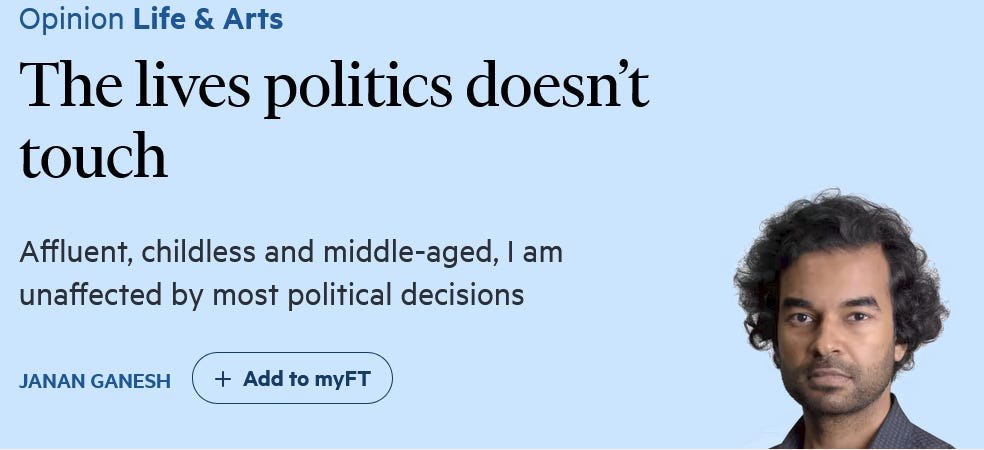

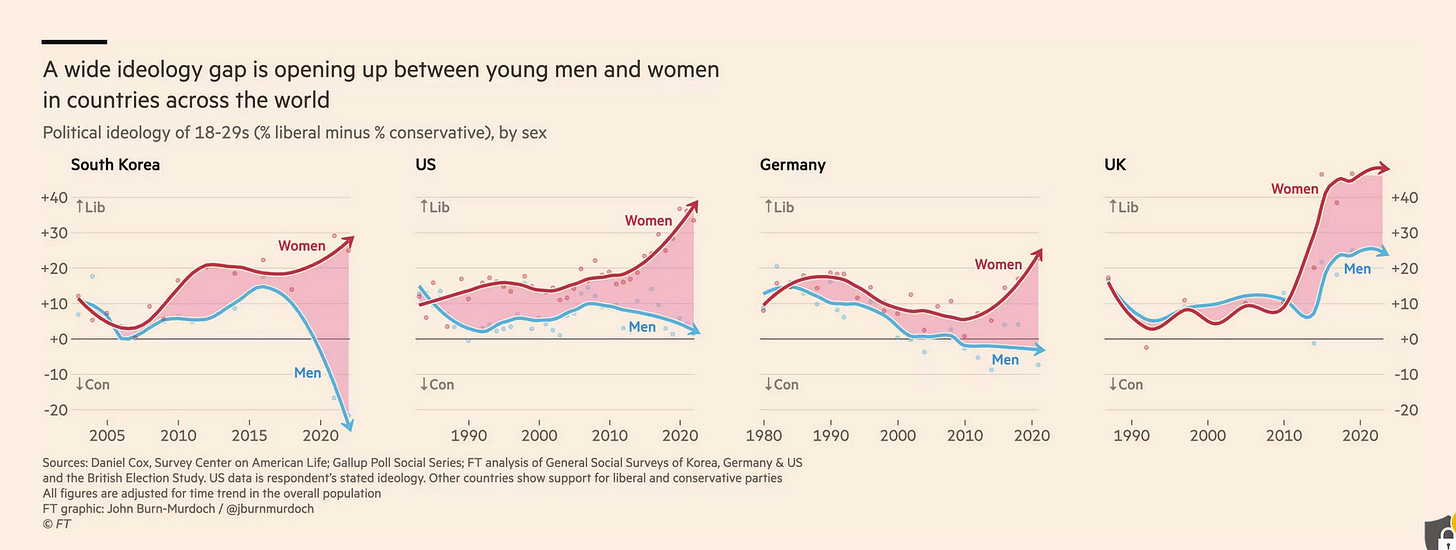
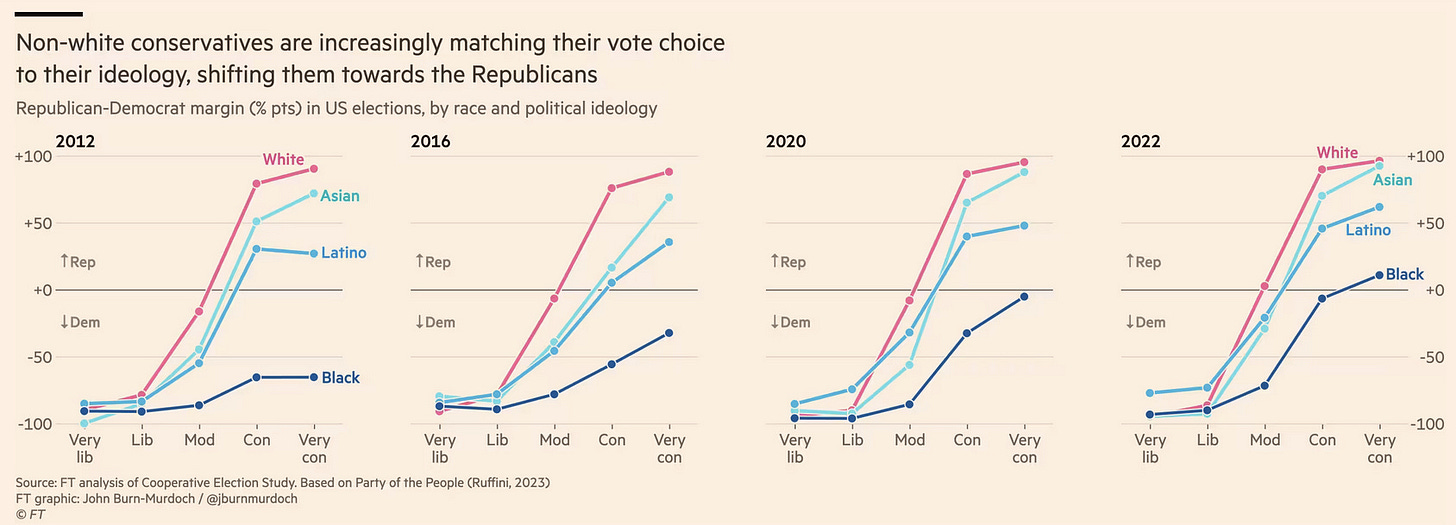


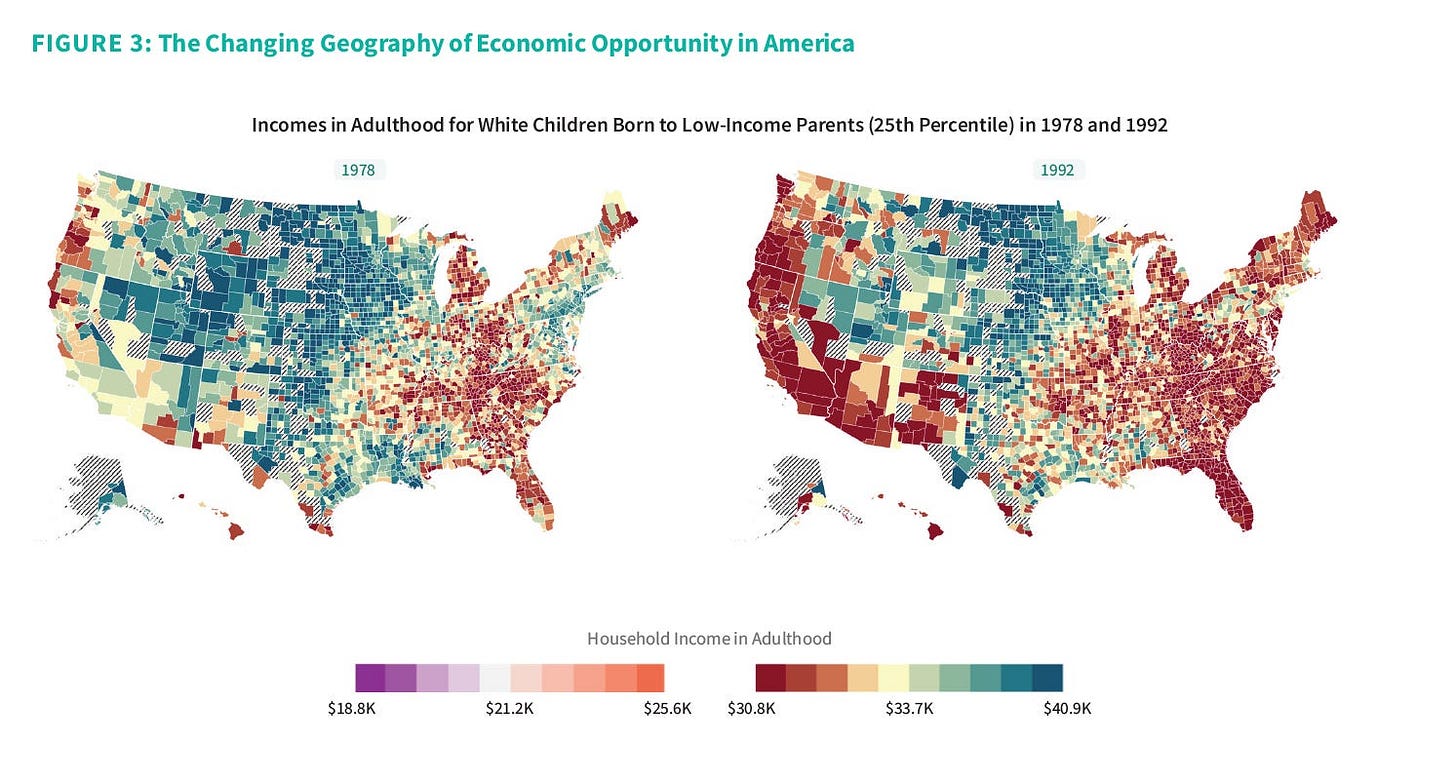
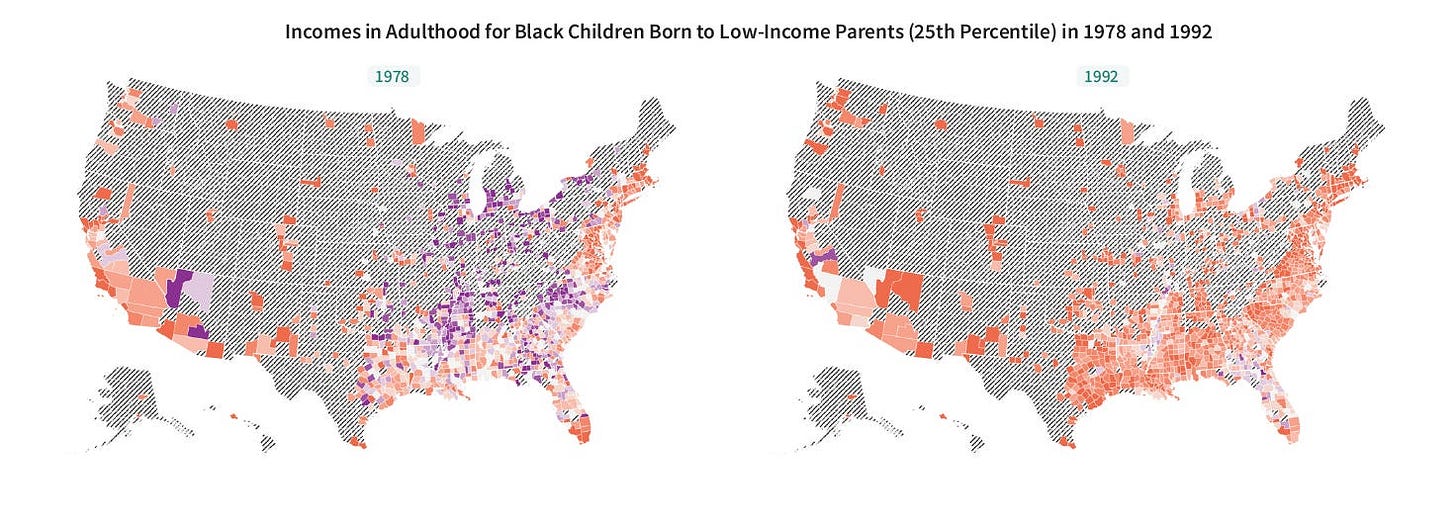
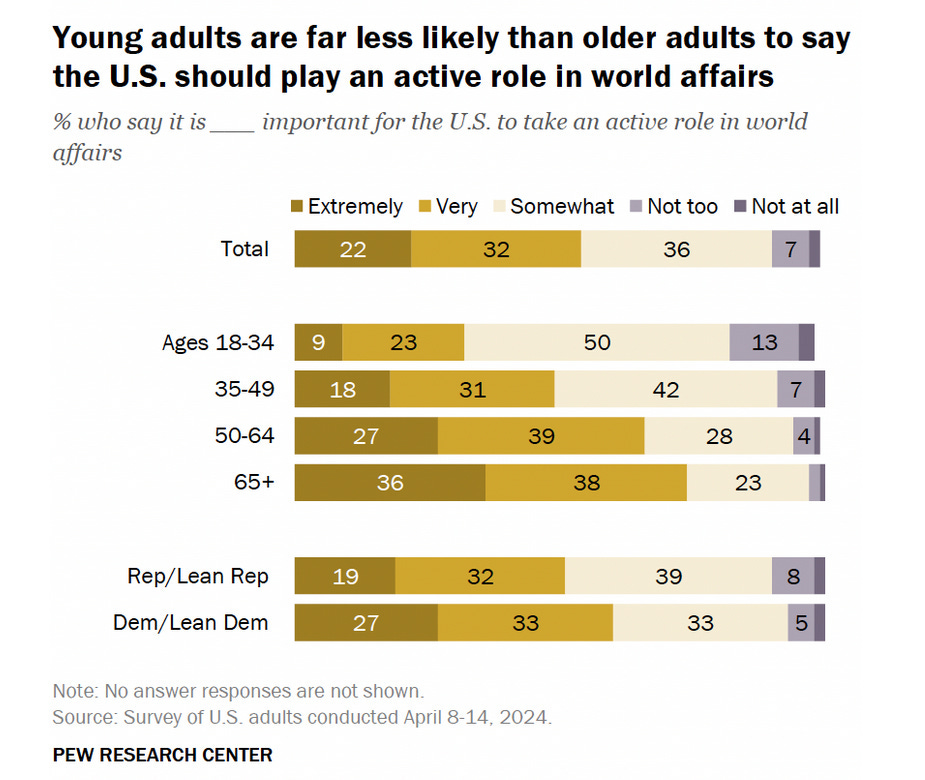
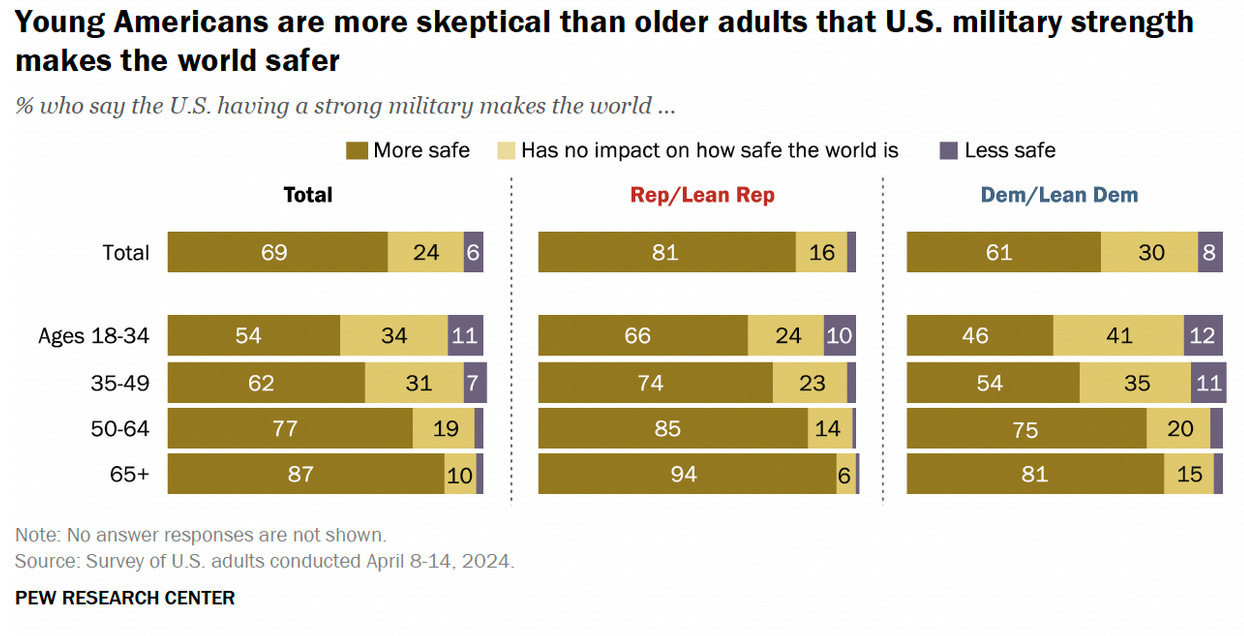
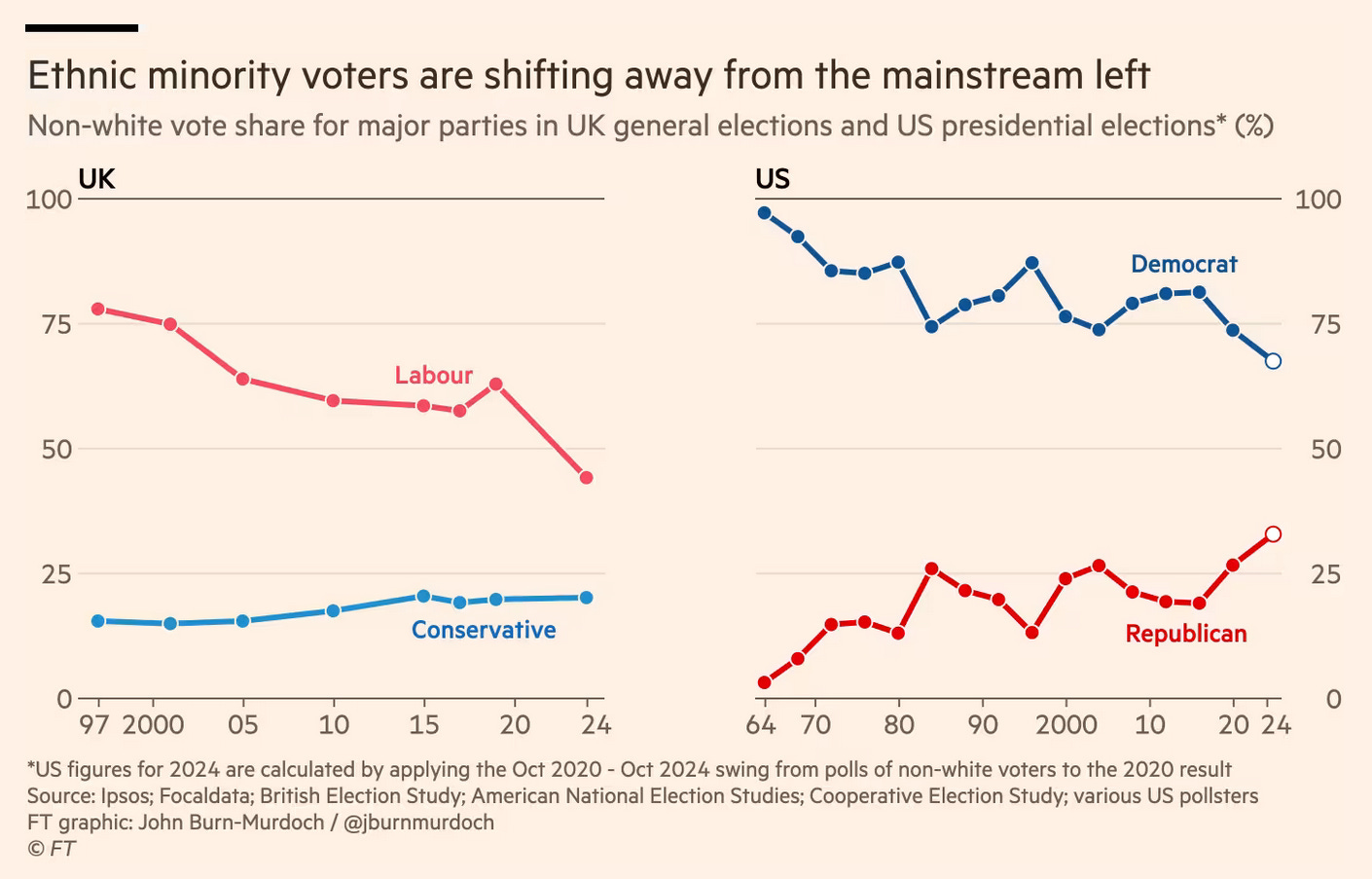
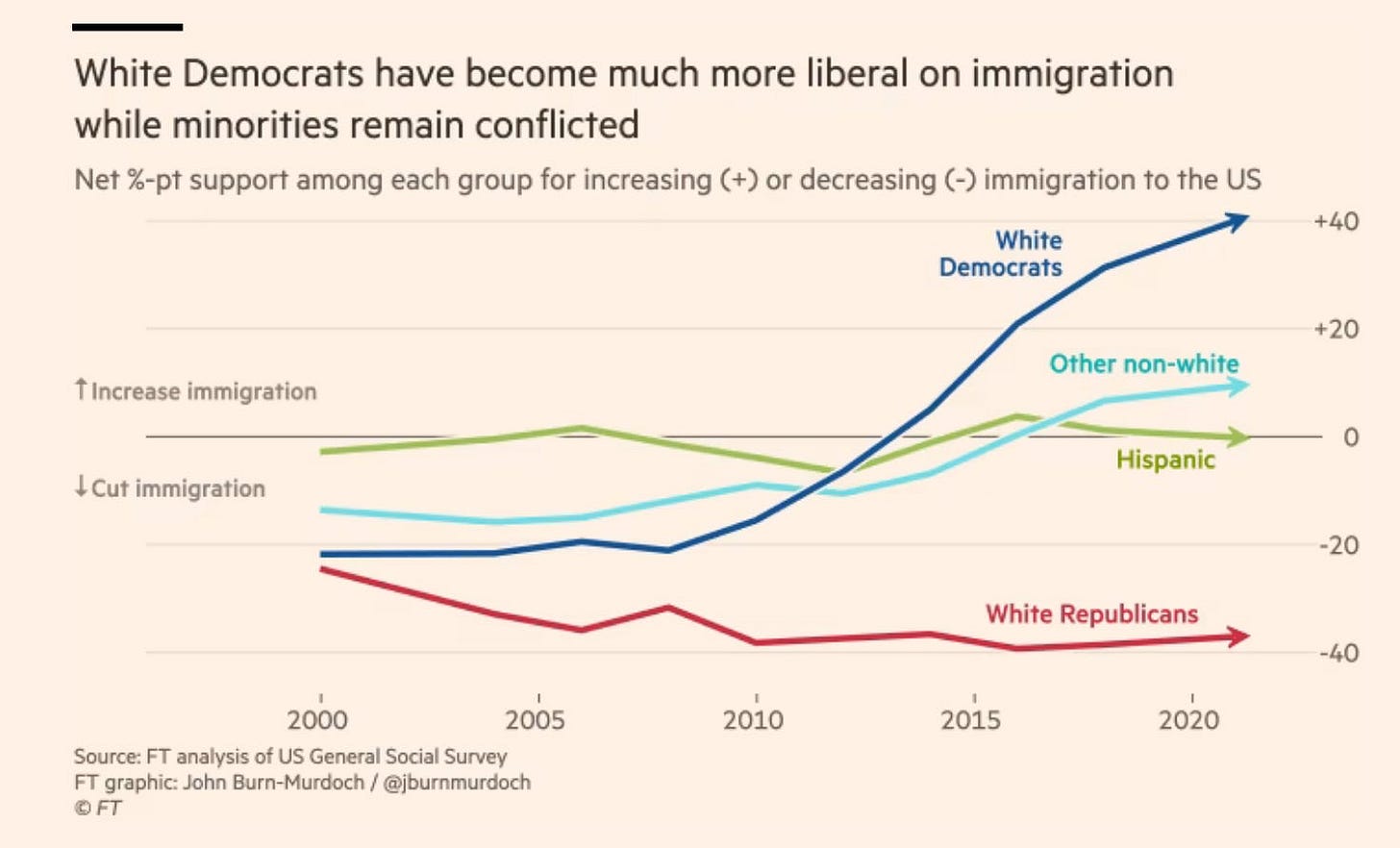
Talking about Democrats as "the left" is hysterically funny.
And the rumors of a collapse of the world order, to be replaced by a "multipolar world order" are way overdone.
https://edwardslavsquat.substack.com/p/would-you-like-know-what-brics-just
Would you like to know what BRICS just declared? This seems like useful information if you are interested in BRICS. Edward Slavsquat, 10/25/24.
BRICS, the multipolar world order and global capitalism doing a world-wide reset.
https://off-guardian.org/2024/10/23/the-great-multipolar-reset-globalist-vampires-in-bed-with-the-brics/
The Great Multipolar Reset: Globalist Vampires in Bed With The BRICS, “009,” 10/23/24. Segments.